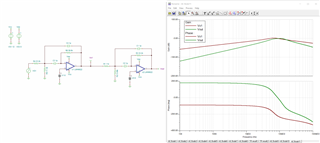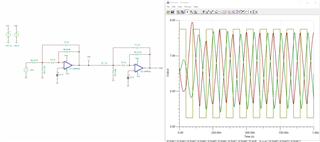Other Parts Discussed in Thread: THS4211
Dear Team,
Follow up this post:
Regarding sin2sqr circuit, please see my feedback below.
1.Are you able to provide more details on what the application or end requirements are for this circuit.
We've identified an issue with EMI radiation emission at low frequencies such as 30MHz, 50MHz, and 70MHz. This problem is caused by 10MHz clock harmonics. These harmonics only manifest in square wave signals, not in sine waves. As a solution, we will use this circuit to convert the signal.
- It is possible to generate a sine wave from a square wave, but you will face issues such as poor harmonic distortion performance and trying to get a very linear sine wave will also pose some difficulties. If you are able to provide more requirements you are looking to achieve, that would help identify the best solution.
Our goal is to reduce the magnitude of the 10MHz clock harmonic. However, we are concerned that other low-frequency noise may be amplified, given that this is a low-pass filter and amplifier circuit. Do you have any suggestions for this circuit?
--- New question ---
We observed a +/-6V waveform at the output side ("2") when injecting a 10MHz clock into this circuit at the input side ("1"). However, the output signal returns to +/-1.5V within a few milliseconds. Please provide guidance on how to resolve this issue. Thanks.

I am assuming that you meant the input could be from 1.2V-0V or 5.5V-0V. Is 50% duty cycle required? Yes.
Many Thanks,
Jimmy






